Visuals
"A good sketch is better than a long speech"
-- Napoleon Bonaparte
Science and engineering are intellectual processes with the mission to understand and create,
but when we succeeded, it becomes as important, to actually explain the discovery and innvention to fellows around us.
People process information quite differently, but for me, and many others, it is the visuals, such as cartoon, symbols and diagrams,
which allow the complex ideas to be grasped swiftly. Therefore it is a great interest for me, how to show and
explain ideas visually and it has been a really joyful part of science to also illustrate it.
Here are just few examples of my graphical works ...
Illustrations in Research Papers
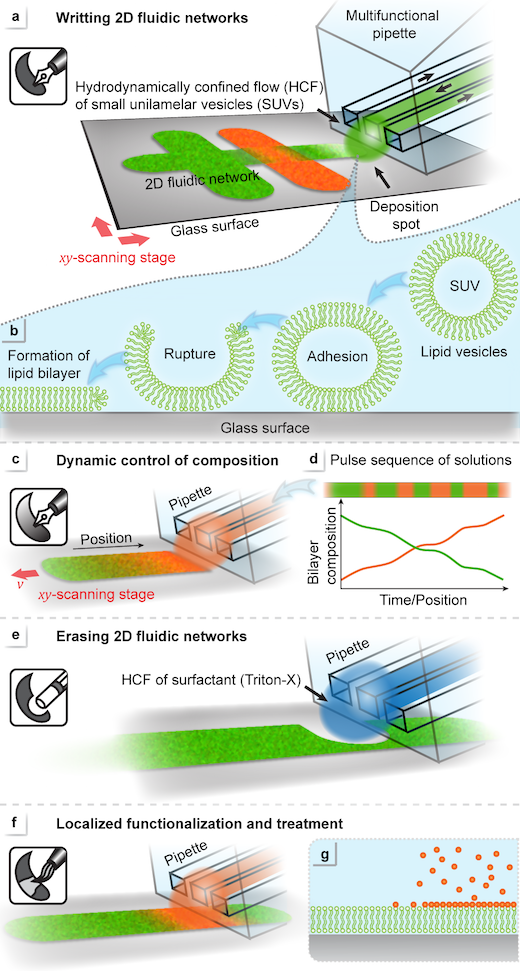
Figure: Lab on a Biomembrane, fluidic printing and processing technique for molecularly thin supported biomembrane layers.
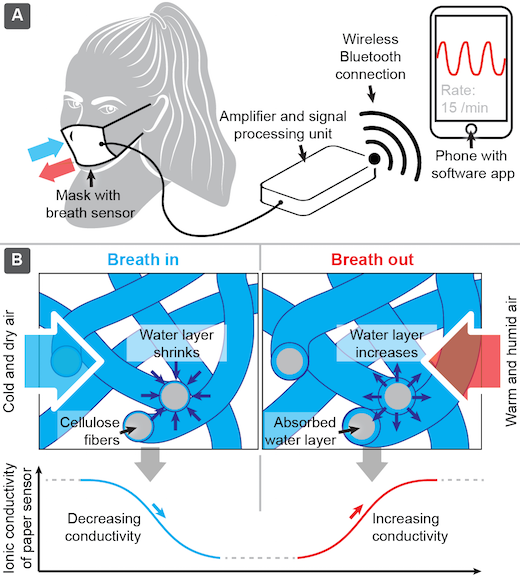
Figure: Concept of wearable paper-based respiration sensor.
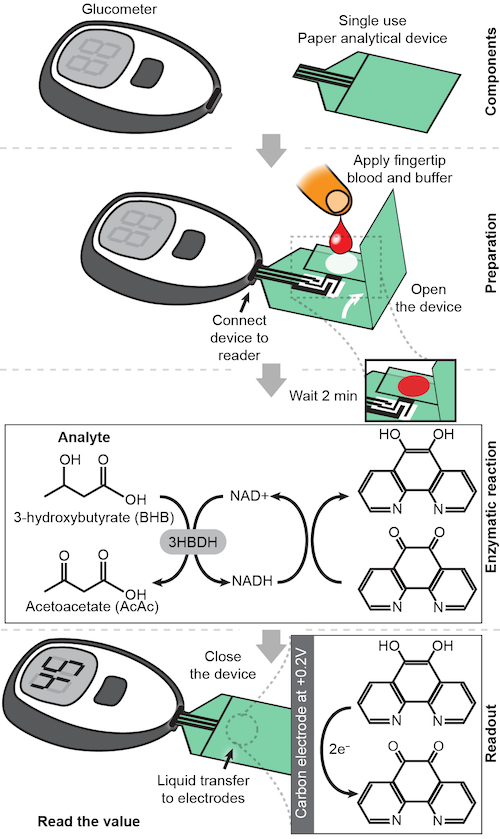
Figure: Concept of electrochemical paper analytical device with "pop-up" valve for diabetes diagnostics.
Journal covers
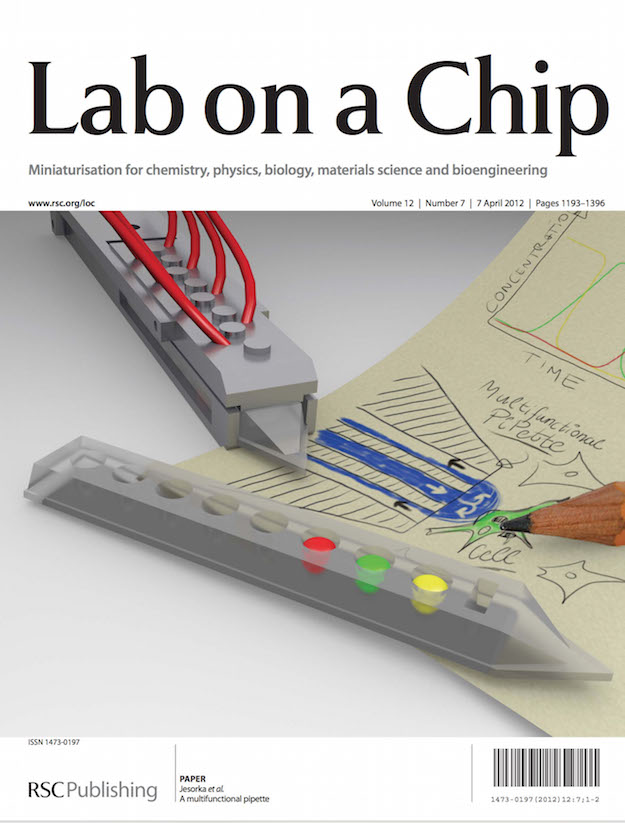
Figure: Multifunctional pipette (Lab on a Chip front cover).
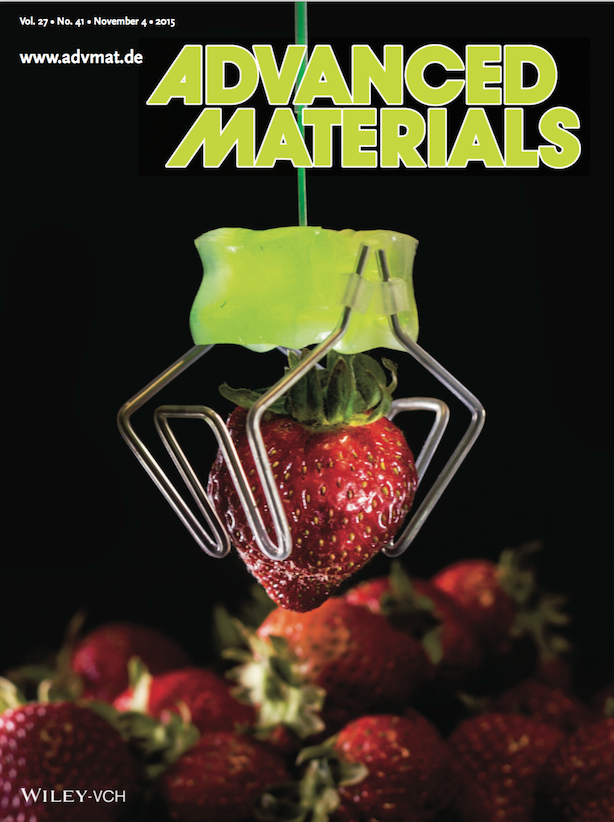
Figure: Buckling Soft-robot (Advanced Materials front cover).
Educational
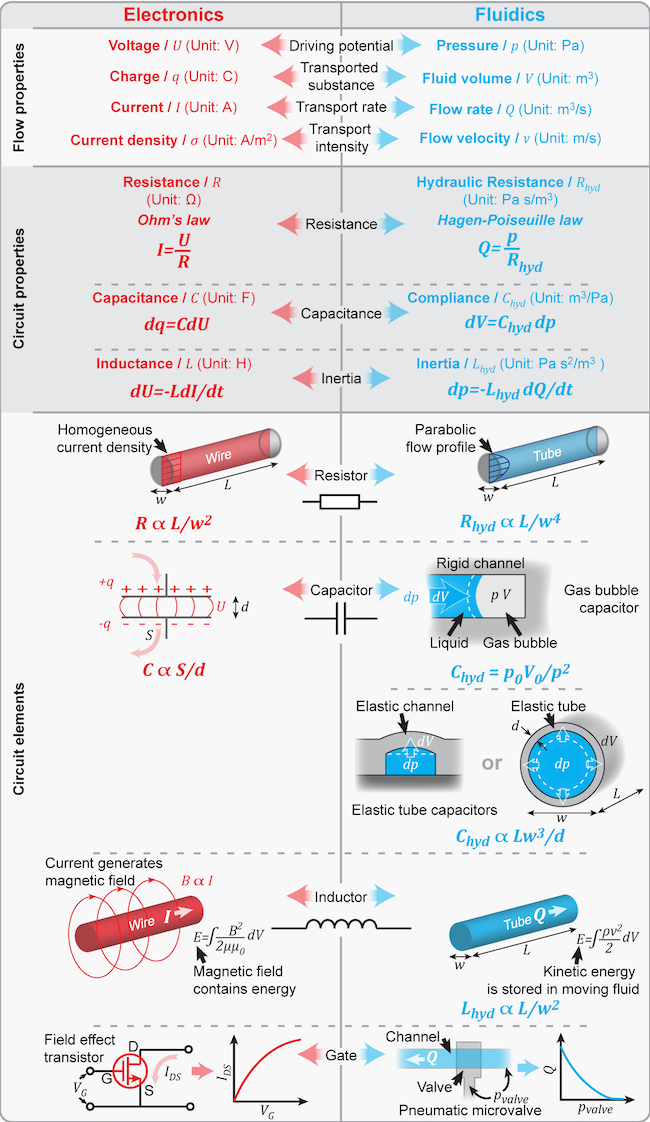
Figure: Analogies and differences between electronic and fluidic circuit elements. (My doctoral thesis)
Sketches
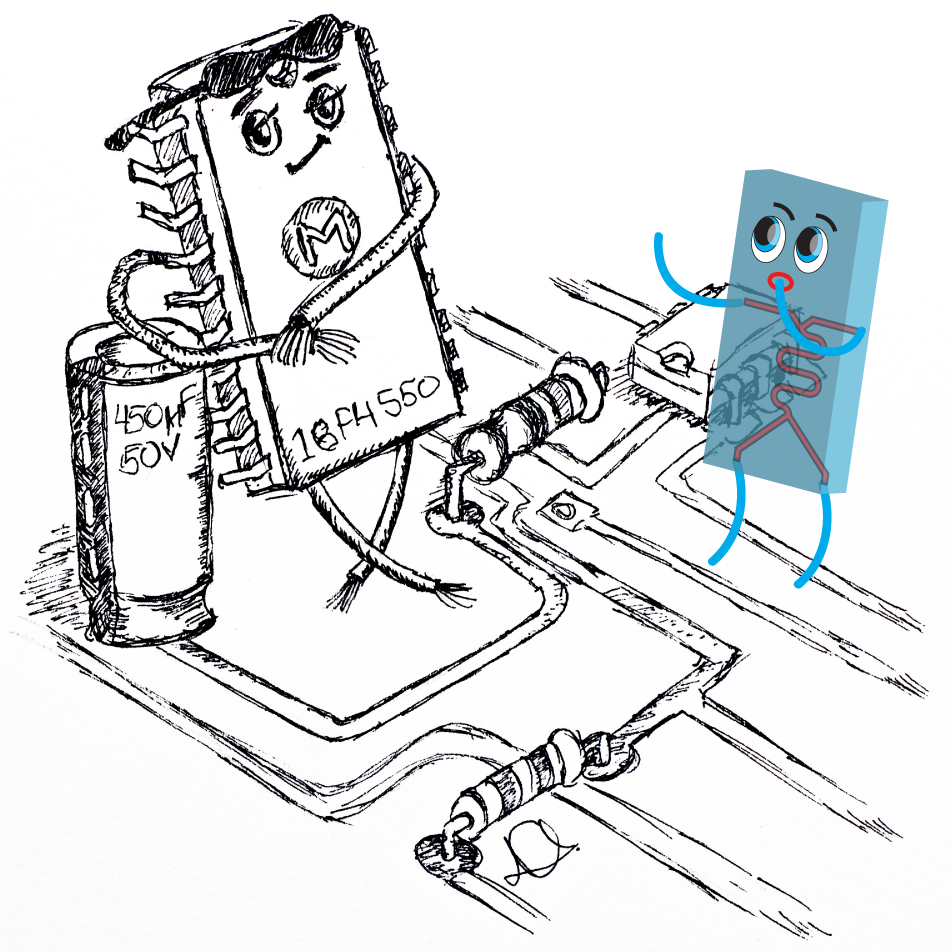
Figure: "Microfluidics meets its older brother Microelectronics" (My doctoral thesis)

Figure: Explaining the problem of sleep apnea
Technical Drawings
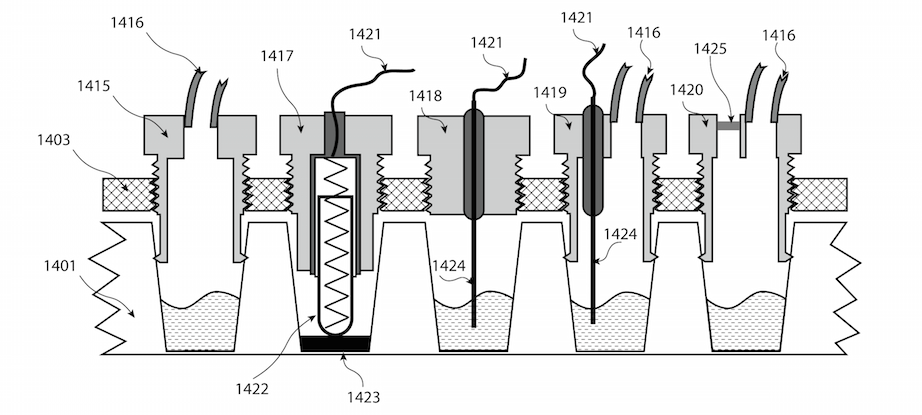
Figure: Fluidic interterface (patent drawing)
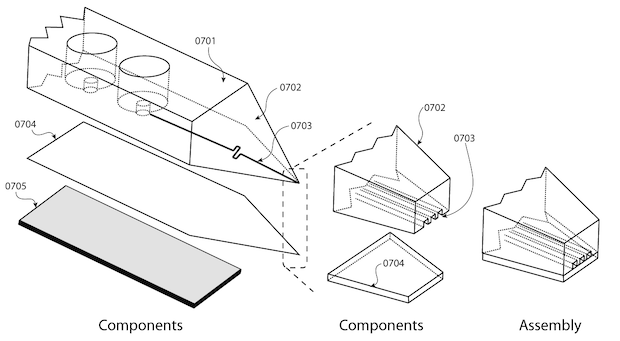
Figure: Microfluidic chip (patent drawing)
Small ...

Figure: Multifunctional pipette with tiny 20 micron channels filled with red dye (Macrophotography)
... and even Smaller
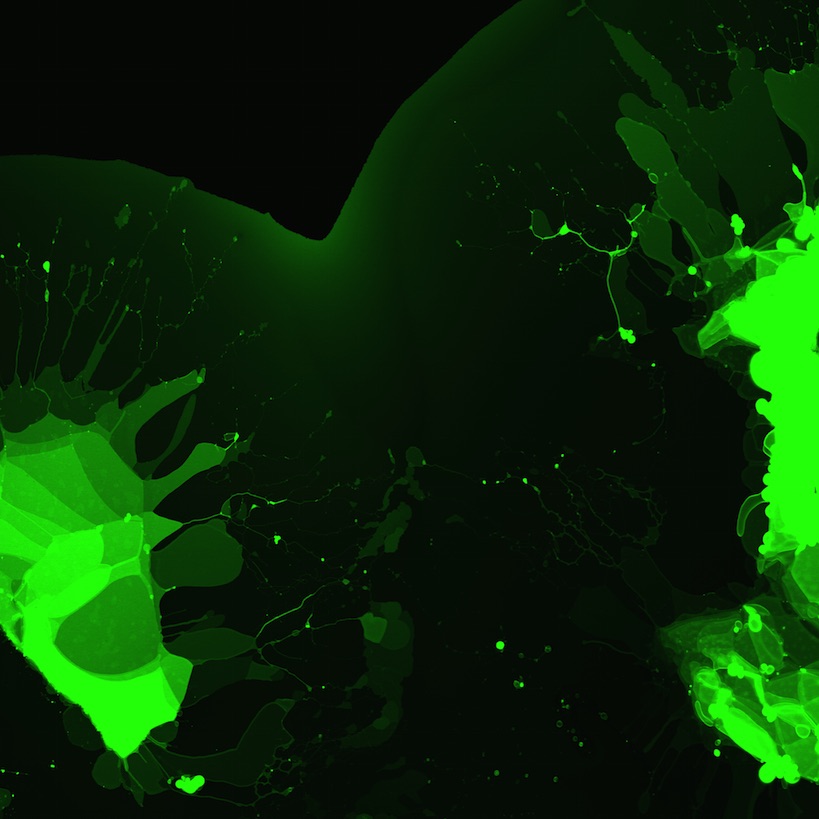
Figure:"Landscapes of the Nanoworld" - these may look like areal photos of fields, but their dimensions are many orders of magnitude smaller. These are molecularly thin layers of lipids membranes, which have self-assembled into bi- and multilayers, stacks and small tubes (Scanning fluorescent confocal microscopy)
Logo design

Photography

